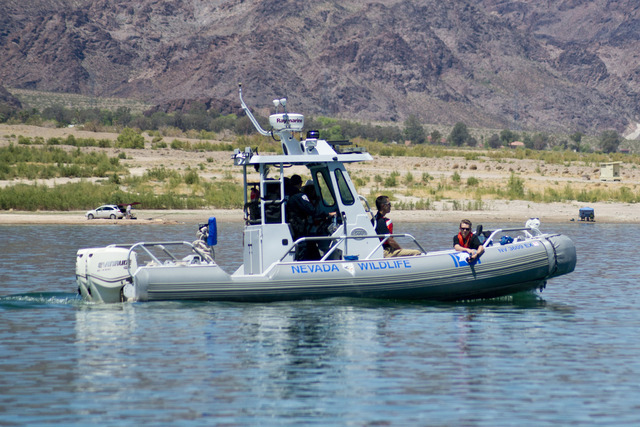Don’t forget to inspect your boat before putting it in water
The summer boating season generally begins with Memorial Day weekend and runs through Labor Day. That means the majority of boat owners store their vessels for most of the year. Unfortunately, when boats that have been stored for so long are launched in the spring, they sometimes harbor unknown mechanical or other issues.
Unless they are discovered earlier, those issues frequently manifest themselves to unsuspecting boaters during the first few adventures of the year — sometimes on the first outing, and problems seldom occur where it is convenient. That means you could find yourself floating in the middle of Lake Mead waiting for help or blocking a lane on the launch ramp.
Often, problems associated with long-term storage take place within the vessel’s fuel system. During my years serving as a game warden on Lake Mead, it was common for officers to respond to early-season calls involving problems ranging from something as simple as an empty fuel tank to a plugged fuel line or dirty injectors.
Another common but more dangerous problem associated with a boat’s fuel system is a cracked fuel line.
During one Memorial Day weekend, for example, a boat that was tied alongside the courtesy dock at Callville Bay Marina suddenly exploded. I was just pulling up to the dock when the explosion sent a ball of fire toward the sky and threw the vessel’s three occupants flying through the air. Luckily, they suffered only minor burns along with a few cuts and abrasions, and despite the holiday crowds, no other boats were involved.
The subsequent investigation found the primary cause of the explosion was a cracked fuel line that leaked gasoline into the engine compartment. With the engine cover closed, gasoline fumes soon built up to dangerous levels. Then without taking time to vent the engine compartment, the unwitting operator turned the key in the ignition and ignited the fumes.
Boats are a collection of interactive systems ranging from mechanical to electrical and are therefore subject to problems and even failure. However, a basic equipment inspection each spring could serve as the proverbial “stitch in time” by identifying issues that could become a problem when you are on the water and far from a safe harbor. You can do this yourself or ask your boat mechanic to do it.
Pay special attention to the fuel system. Begin by inspecting fuel lines, fittings and hose clamps, and don’t forget to check the gasoline filler hose and fittings associated with it and the vent tube. Replace any hoses that show excessive wear, feel brittle or have cracks. According to the Boat U.S. Foundation, hoses should be approved by the U.S. Coast Guard and carry a statement to that effect.
Also take the time to look at the fuel tank. Look for cracks and signs of leakage. Your nose can tell you a lot, too. And when you fill up, industry organizations recommend that you avoid using gasoline with an ethanol percentage higher than 10 percent.
Be sure to check your battery. Make sure it still holds a full charge and that the battery cables are clean and tight. Keep in mind your electrical system includes the ignition, bilge pumps, stereos and navigation lights — anything that has an electrical wire attached to it. Look for loose or corroded electrical connections and make sure your navigation lights are working. Then take the opportunity to repair problems as needed. These are accomplished much easier on dry ground than on the water.
Depending on your motor type, be sure to inspect all belts, hoses and water intake components. Just like those in your car or truck, each of these items has a vital role to play and can leave you stranded when they aren’t functioning correctly. Don’t gamble with a part that is nearing its end.
Sometimes people overlook the boat trailer — a mistake that has left more than one boater stranded. Check the tires, lights, wheel bearings and the strap on the boat winch. An aging, sun-baked strap can break when you don’t need it to. Keep in mind that asphalt can do significant damage to a vessel that leaves its trailer at 65 mph.
Freelance writer Doug Nielsen is a conservation educator for the Nevada Department of Wildlife. His “In the Outdoors” column, published Thursday in the Las Vegas Review-Journal, is not affiliated with or endorsed by the NDOW. Any opinions he states in his column are his own. He can be reached at intheoutdoorslv@gmail.com.




























